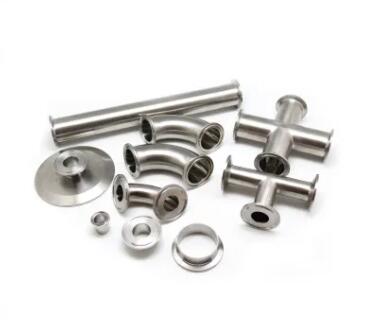How do pipe fittings differ from pipes
2023-10-27
Pipe fittings and pipes are distinct components in plumbing and piping systems, each serving a different role. Here are the key differences between pipe fittings and pipes:
1. Function:
- Pipes: Pipes are tubular structures that serve as conduits for the transportation of fluids or gases from one point to another within a plumbing or piping system. They form the main pathway for the flow of materials.
- Pipe Fittings: Pipe fittings are components used to connect, control, or change the direction of pipes. They facilitate the assembly and modification of the piping system, allowing for direction changes, connections to equipment, size transitions, and branching.
2. Shape and Structure:
- Pipes: Pipes are typically long, cylindrical, and hollow structures with a consistent diameter and wall thickness. They are designed to carry fluids or gases over a distance.
- Pipe Fittings: Pipe fittings come in various shapes and sizes, depending on their specific function. They can have elbow shapes, T-shapes, cross shapes, coupling structures, and more, and are often used at junctions or to modify the direction or size of a pipe.
3. Material and Construction:
- Pipes: Pipes are usually made from materials like metal (e.g., steel, copper, stainless steel), plastic (e.g., PVC, HDPE), or other materials designed for fluid or gas transport. They have a consistent material and thickness along their entire length.
- Pipe Fittings: Pipe fittings can be made from the same materials as pipes, but they are manufactured to specific shapes and dimensions. Their construction may involve complex designs to accommodate various functions.
4. Role in the System:
- Pipes: Pipes are the primary conduits through which fluids or gases flow. They are responsible for the transportation of materials from one location to another within a system.
- Pipe Fittings: Pipe fittings are used to modify or control the flow of materials within the piping system. They provide flexibility and versatility in adapting the system to different requirements.
5. Size and Diameter:
- Pipes: Pipes are characterized by their diameter (e.g., 1 inch, 2 inches, etc.), and they come in standard sizes. The diameter determines the capacity and flow rate of the pipe.
- Pipe Fittings: Pipe fittings may have various diameters to accommodate pipes of different sizes. They are designed to create transitions or connections between pipes of varying diameters.
In summary, pipes serve as the main conduits for the transport of materials, while pipe fittings are used to connect, modify, and control the flow of materials within a plumbing or piping system. Both components are essential for the efficient and versatile operation of these systems.



